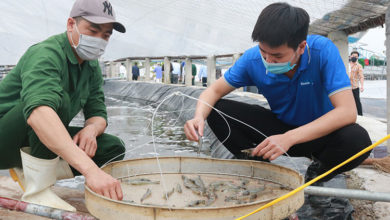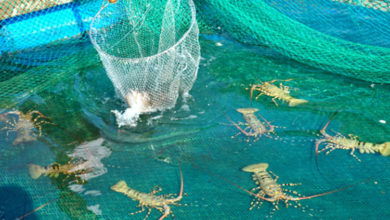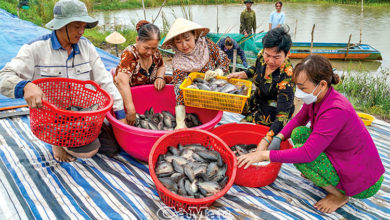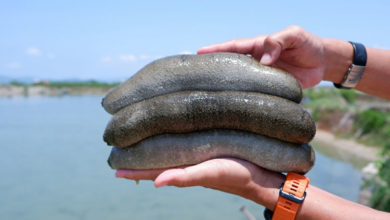Produce strong seed, sustainable shrimp
Vietnam has become a leading global shrimp exporter, driven by improvements in shrimp seed quality, key to productivity and disease resistance. Despite notable advances in technology, management, and genetics, the industry still faces ongoing challenges.
Expanding scale and advanced technology
Leading enterprises like Thang Long Bio-Tech Co., Ltd. are pioneering high-quality shrimp seed production in Vietnam. Since launching in 2013, the company has developed three production facilities, targeting an annual capacity of 4.2 billion postlarvae of whiteleg shrimp and 300 million postlarvae of black tiger shrimp by 2025, marking an impressive figure that highlights the sector’s immense potential.
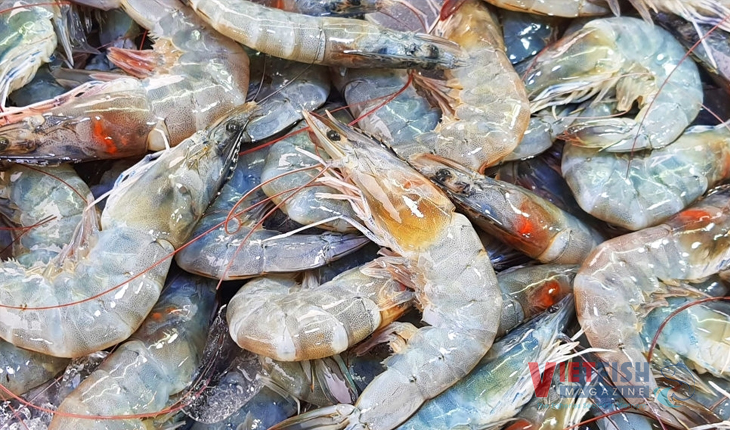
To ensure superior quality, Thang Long has adopted advanced production systems. Water, considered the “lifeblood” of hatcheries, is treated using ozone, ultrafiltration, UV, and recirculating filtration systems, effectively eliminating EHP spores, one of the major disease threats in shrimp farming. Broodstock is imported from high-growth, SPF (Specific Pathogen Free) sources, and is used for a maximum of 100 days to minimize disease risk.
The larval rearing process is highly optimized, involving triple-stage Nauplius screening, continuous clean water rinsing, and individually controlled temperatures for each tank to prevent cross-contamination. Nutrition is another standout area: larvae are fed a mix of imported live feed such as worms, squid, and artemia, quick-frozen to suppress pathogens, combined with in-house cultivated algae and PCR-monitored supplements. The company also applies high-nutrition green algae production and rotifer culture, helping shrimp grow stronger and more resilient.
Genetics and selective breeding: a technological leap
Beyond production, the Vietnamese shrimp seed industry is also embracing innovation in genetics and selective breeding. At VietShrimp 2025, Viet-Uc Seafood Corporation highlighted the growing role of DNA-based evaluations in improving shrimp genetics. Using Next-Generation Sequencing (NGS), they can identify genetic variations, trace lineages, and select optimal breeding stock.
On the global stage, Blue Genetics, with its SPF breeding center in Mexico, is a benchmark model. By selecting only the healthiest and fastest-growing families, conducting disease resistance tests, and applying genotyping, Blue Genetics has enhanced shrimp health across generations. Their Golden and Sky shrimp lines are being studied and developed in Vietnam, showing strong performance in intensive farming conditions.
Ongoing challenges: disease and health management
Despite these advancements, disease remains a persistent threat. Common issues like EHP, Taura Syndrome (TPD), and white feces disease continue to impact productivity. Ensuring SPF-certified seed and treating live feed with rapid-freezing technology are essential countermeasures. Trusted suppliers like I V-BIO offer artemia larvae free from Vibrio, EHP, and EMS, making them a safe choice for hatcheries.
Shrimp health is also tied closely to microbiome management. KYTOS provides flow cytometry technology to rapidly analyze microbiota and build predictive models for survival rates. Meanwhile, Minh Phu Seafood has optimized PL shrimp transport using fresh oxygen to reduce stress and lower bacterial invasion, an important step in improving seed quality.
Market trends and strategic direction
Globally, the shrimp seed market is experiencing notable shifts. In India, one of Vietnam’s key competitors, a drop in shrimp seed supply during 2024–2025 is expected to cause a 1% decline in whiteleg shrimp output, while black tiger shrimp sees modest growth. This shift reflects farmers’ adaptability to price fluctuations but also raises concerns about the genetic quality of domesticated shrimp.
To maintain its competitive edge, Vietnam must tighten control over seed quality in circulation. Key actions include stricter origin verification, enforcement against low-quality hatcheries, and developing a traceability system. Proposals for designated breeding zones are also on the table to improve environmental and disease management, moving away from today’s fragmented, small-scale operations.
Positioning Vietnam as a global shrimp powerhouse
Vietnam’s shrimp seed industry is on the brink of transformative growth. Government support through zoning policies, technological investments, and initiatives like i4AG (Improving Water Recirculation Systems for Sustainable Aquaculture) provides crucial momentum. When paired with modern production techniques, genetic research, and robust disease prevention, these efforts can help create a supply of premium-quality shrimp seed ready to meet the increasingly demanding domestic and global markets.
Ultimately, shrimp seed is more than just the starting point of the value chain, it is the cornerstone of sustainable shrimp farming. With the right direction and investment, Vietnam is well-positioned to solidify its status as a true shrimp powerhouse on the world map.
VFM



